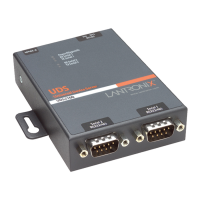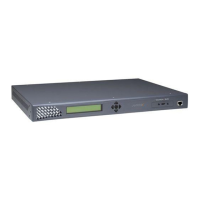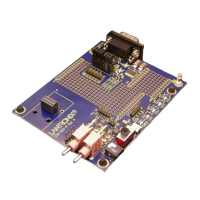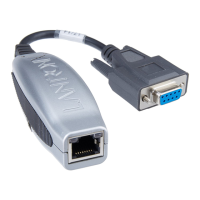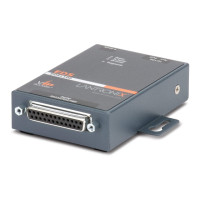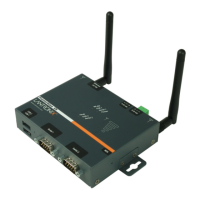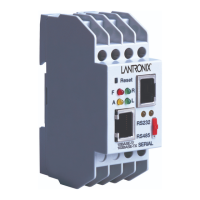4: Configuration Using Web-Manager
Stop Bits The stop bit follows the data and parity bits in serial
communication. It indicates the end of transmission. The
default setting is 1.
Pack Control
Enable Packing Select to enable packing on the UDS1100.
Two firmware-selectable packing algorithms define how and
when packets are sent to the network.
The standard algorithm is optimized for applications in which
the unit is used in a local environment, allowing for very small
delays for single characters, while keeping the packet count
low.
The alternate packing algorithm minimizes the packet count
on the network and is especially useful in applications in a
routed Wide Area Network (WAN). Adjusting parameters in
this mode can economize the network data stream.
Disabled by default.
Idle Gap Time Select the maximum time for inactivity. The default time is
12 milliseconds.
Match 2 Byte Sequence Use to indicate the end of a series of data to be sent as one
group. The sequence must occur sequentially to indicate end
of the data collection to the UDS1100. The default setting is
No.
Match Bytes Use to indicate the end of a series of data to be sent as one
group. Set this value to 00 if specific functions are not needed.
Send Frame Immediate After the detection of the byte sequence, indicates whether to
send the data frame or the entire buffer. Select Yes to send
only the data frame. The default setting is No.
Send Trailing Bytes Select the number of bytes to send after the end-of-sequence
characters. The default setting is None.
Flush Input Buffer (Serial to Network)
With Active Connect
Select Yes to clear the input buffer with a connection that is
initiated from the device to the network. The default setting is
No.
With Passive Connect
Select Yes to clear the input buffer with a connection initiated
from the network to the device. The default setting is No.
At Time of Disconnect
Select Yes to clear the input buffer when the network
connection to or from the device is disconnected. The default
setting is No.
Flush Output Buffer (Network to Serial)
With Active Connect
Select Yes to clear the output buffer with a connection that is
initiated from the device to the network. The default setting is
No.
With Passive Connect
Select Yes to clear the output buffer with a connection initiated
from the network to the device. The default setting is No.
At Time of Disconnect
Select Yes to clear the output buffer when the network
connection to or from the device is disconnected. The default
UDS1100 User Guide 31
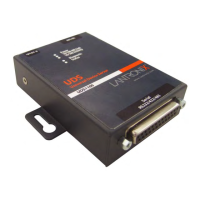
